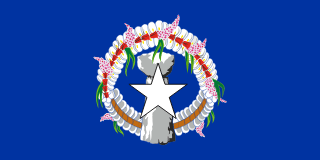Northern Mariana Islands - Environment

As far as the environment of Northern Mariana Islands is concerned, there have been . As for nvironment - international agreements, we have; .
About the environment of Northern Mariana Islands
| Climate | We have tropical marine; moderated by northeast trade winds, little seasonal temperature variation; dry season December to June, rainy season July to October |
|---|---|
| Revenue from forest resources | |
| Revenue from coal | |
| Waste and recycling | Municipal solid waste generated annually: 32,800 tons (2024 est.) |
| Total renewable water resources | |
| Major rivers (by length in km) | |
| Land Use | |
| Agricultural land | 1.2% (2023 est.) |
| Agricultural land: arable land | arable land: 0.2% (2023 est.) |
| Agricultural land: permanent crops | permanent crops: 0.2% (2023 est.) |
| Agricultural land: permanent pasture | permanent pasture: 0.8% (2023 est.) |
| Forest | 53% (2023 est.) |
| Other | 45.9% (2023 est.) |
| Urbanization | |
| Urban population | 92.1% of total population (2023) |
| Rate of urbanization | 0.36% annual rate of change (2020-25 est.) |
| Major urban areas (Pop) | 51,000 SAIPAN (capital) (2018). |
All Important Facts about Northern Mariana Islands
Want to know more about Northern Mariana Islands? Check all different factbooks for Northern Mariana Islands below.
-
 Northern Mariana Islands Factbook
Northern Mariana Islands Factbook
-
 The Economy of Northern Mariana Islands
The Economy of Northern Mariana Islands
-
 Learn about the Government of Northern Mariana Islands
Learn about the Government of Northern Mariana Islands
-
 Communication in Northern Mariana Islands
Communication in Northern Mariana Islands
-
 Popular Universities in Northern Mariana Islands
Popular Universities in Northern Mariana Islands
-
 Enerny in Northern Mariana Islands
Enerny in Northern Mariana Islands
-
 Transport in Northern Mariana Islands
Transport in Northern Mariana Islands
-
 The Geography and society of Northern Mariana Islands
The Geography and society of Northern Mariana Islands
-
 The Environment of Northern Mariana Islands
The Environment of Northern Mariana Islands
-
 Military and security in Northern Mariana Islands
Military and security in Northern Mariana Islands